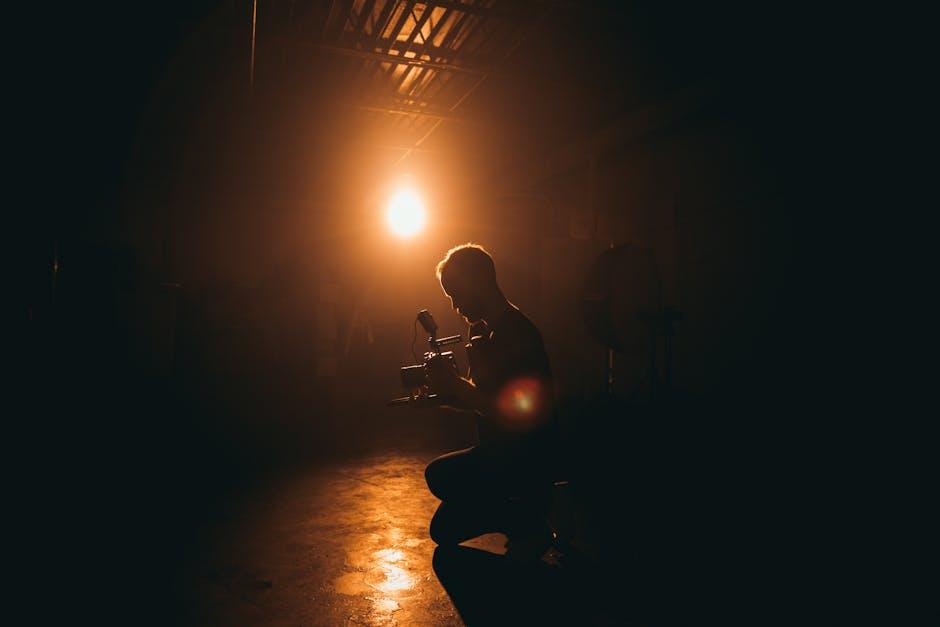In the world of filmmaking, the journey from script to screen is rarely a straight path. Each film, a unique tapestry of creativity, encounters its own set of obstacles—from budget constraints and tight schedules to unexpected weather and shifting technologies. Yet, amidst these challenges, filmmakers strive to maintain their creative vision, ensuring that the heart of their story remains intact. This article delves into the strategies and resilience required to navigate the tumultuous seas of production, offering insights into how directors, producers, and crews preserve the essence of their artistic intent, even when the odds seem insurmountable.
Navigating the Storm: Balancing Vision with Practical Constraints
In the world of filmmaking, maintaining a creative vision amidst the whirlwind of production challenges requires a delicate balance between imagination and reality. Filmmakers often find themselves caught between their ambitious dreams and the practical constraints that come with budgets, time, and resources. The key lies in adapting without compromising the essence of the story. This involves:
- Prioritizing Core Elements: Identifying the heart of the narrative and ensuring these elements remain intact, even if certain scenes or effects need to be scaled back.
- Flexible Planning: Being open to alternative methods or locations that can achieve similar results without exceeding constraints.
- Collaborative Creativity: Engaging with the crew and cast to brainstorm innovative solutions that align with both vision and feasibility.
Ultimately, the ability to navigate these storms lies in a filmmaker’s capacity to stay focused on the story’s core message, while embracing the constraints as opportunities for creative problem-solving. This harmonious dance between vision and practicality is where true cinematic magic often emerges.

The Art of Adaptation: Turning Obstacles into Opportunities
Filmmaking is an intricate dance between vision and reality, where directors often encounter unexpected hurdles that test their creative mettle. Adapting to these challenges requires a keen ability to pivot and transform potential setbacks into unique storytelling elements. When weather conditions change unexpectedly, for instance, a scene initially planned for a sunny day might be reimagined with a dramatic storm, enhancing the narrative’s tension and atmosphere. This flexibility not only preserves the director’s vision but can also enrich the film’s visual and emotional depth.
Filmmakers employ various strategies to maintain their creative trajectory amidst production challenges:
- Collaborative Problem-Solving: Engaging the cast and crew in brainstorming sessions to find innovative solutions.
- Embracing Limitations: Using budget constraints as a catalyst for creative ingenuity, often leading to more authentic and resourceful storytelling.
- Technological Adaptation: Leveraging new technologies to overcome logistical obstacles, such as virtual sets or CGI enhancements.
By viewing obstacles as opportunities, filmmakers can not only preserve their artistic vision but also discover new dimensions within their craft.

Collaborative Creativity: Harnessing Team Synergy for Vision Fulfillment
In the world of filmmaking, maintaining a unified creative vision amidst production hurdles requires a delicate balance of collaboration and individual expertise. Each member of the team, from directors and producers to set designers and editors, plays a crucial role in bringing the vision to life. The key to harnessing team synergy lies in the seamless integration of diverse perspectives, ensuring that every voice contributes to the larger narrative.
- Open Communication: Establishing a culture where ideas flow freely can lead to innovative solutions to unexpected challenges.
- Role Clarity: Clearly defined roles ensure that each team member knows their responsibilities, reducing overlap and confusion.
- Flexibility: Being open to change allows the team to adapt creatively to unforeseen circumstances, keeping the vision intact.
- Shared Goals: Aligning individual objectives with the project’s overall mission fosters a sense of unity and purpose.
By cultivating a collaborative environment, filmmakers can navigate the complexities of production with resilience, ensuring that the creative vision not only survives but thrives through every challenge.

Tools of the Trade: Leveraging Technology to Stay True to Your Vision
In the ever-evolving landscape of filmmaking, technology serves as both a canvas and a brush, allowing directors to craft their visions with precision. Modern tools have become indispensable, offering filmmakers a suite of options to overcome production challenges while staying aligned with their creative intent. Here are some ways technology is empowering filmmakers:
- Pre-visualization Software: Directors can map out complex scenes using digital storyboards, ensuring each shot aligns with their vision before a single frame is captured.
- Real-time Collaboration Platforms: Seamless communication between teams—whether they’re on set or scattered across the globe—helps maintain creative coherence and quick decision-making.
- Advanced Editing Tools: From color grading to CGI integration, modern editing suites offer unparalleled control, allowing filmmakers to refine their narratives and visuals without compromise.
- Virtual Reality (VR) and Augmented Reality (AR): These technologies open new dimensions for storytelling, enabling directors to immerse audiences in worlds previously confined to the imagination.
By leveraging these tools, filmmakers are not only addressing the logistical hurdles of production but also enhancing their ability to tell compelling stories that remain true to their original vision.

